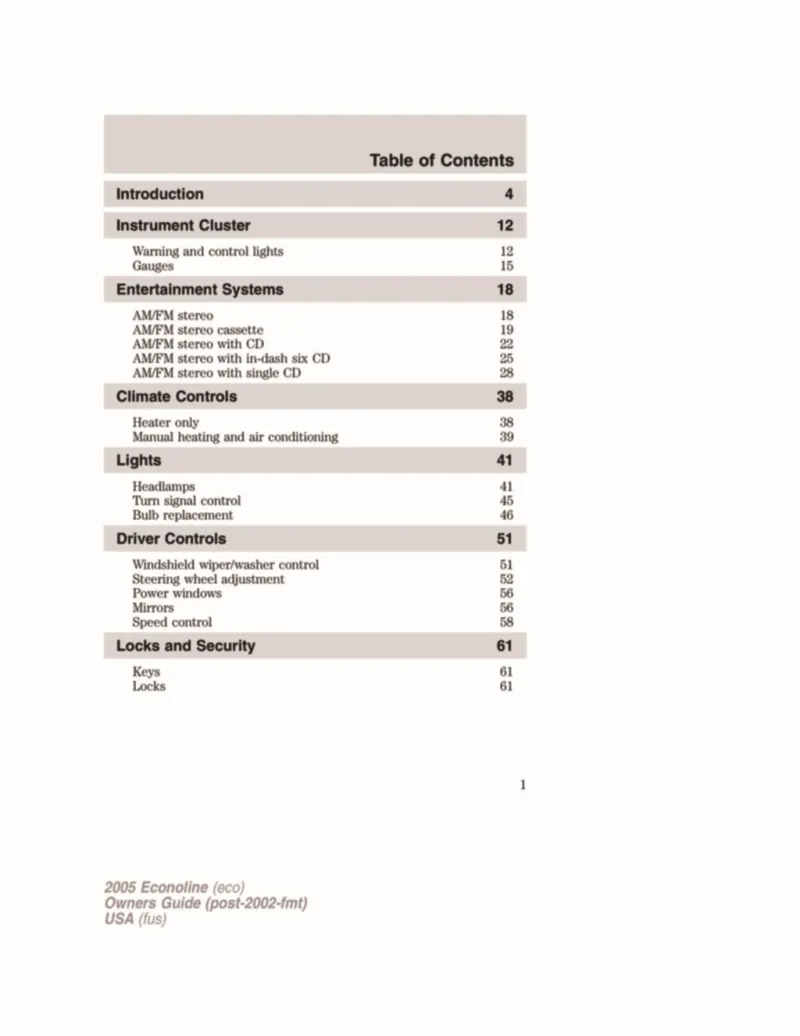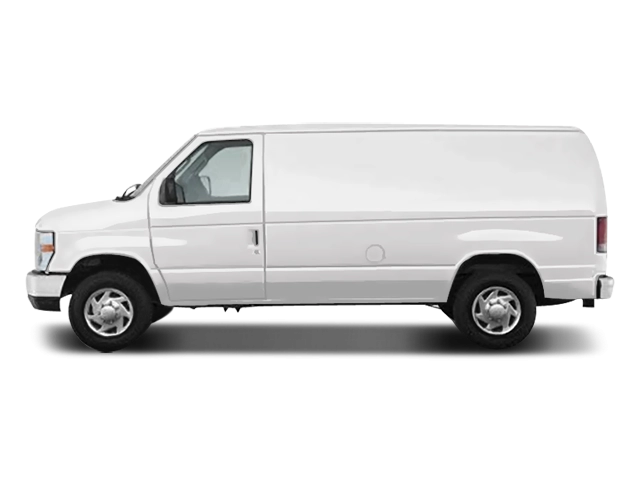2005 Ford E150 Owner's Manual

Table of Contents
2005 Ford E150 Overview
Introduction
The 2005 Ford E150 is a robust and versatile full-size van that caters to both commercial and personal needs. Renowned for its reliability and spaciousness, the E150 delivers a combination of utility and comfort, making it a preferred choice for businesses and families alike. With a variety of configurations available, the E150 appeals to those looking for a practical vehicle capable of handling diverse transport requirements.
Powertrains
Under the hood, the 2005 Ford E150 offers two powerful engine options that cater to varying performance needs. The standard engine is a 4.6-liter V8, producing 305 horsepower and providing ample torque for hauling heavy payloads. Alternatively, buyers can opt for the robust 5.4-liter V8 engine that ups the ante with an impressive 255 horsepower and 350 lb-ft of torque. Both engines are paired with a smooth-shifting 4-speed automatic transmission, ensuring a reliable driving experience whether cruising down the highway or maneuvering through city streets.
Trims
The 2005 E150 is available in several trims, offering flexibility to match individual preferences. The base trim delivers essential features that appeal to budget-conscious buyers, while higher trims offer additional amenities such as enhanced audio systems, upgraded upholstery, and a range of convenient technological options. Whether utilized as a work van, recreational vehicle, or family transporter, the E150's trims provide the features necessary for a tailored driving experience.
Features
Equipped with a spacious interior, the 2005 Ford E150 offers room for up to 8 passengers, making it a practical choice for large groups. Standard features include air conditioning, a well-designed dashboard with easy-to-read gauges, and a multi-speaker audio system. Additional optional features, available on higher trims, include power windows, cruise control, and advanced safety options that enhance both comfort and peace of mind during travel.
Owner's Manual
The owner's manual for the 2005 Ford E150 is a comprehensive guide that provides valuable information for maintenance and optimal operation of the vehicle. It covers essential topics such as routine servicing schedules, troubleshooting tips, and detailed explanations of the features equipped in the van. Accessing the owner's manual allows E150 owners to maximize the performance and longevity of their investment, ensuring a smooth and dependable driving experience for many years.
User manual download
The Ford E150 owner manual for the 2005 model year is to be found in PDF downloadable format on this page. The owner manual for the model year 2005 is free and in English, but the repair manuals are usually not easy to get and may cost more.
Manual Questions
Fill the form below and someone will help you!

